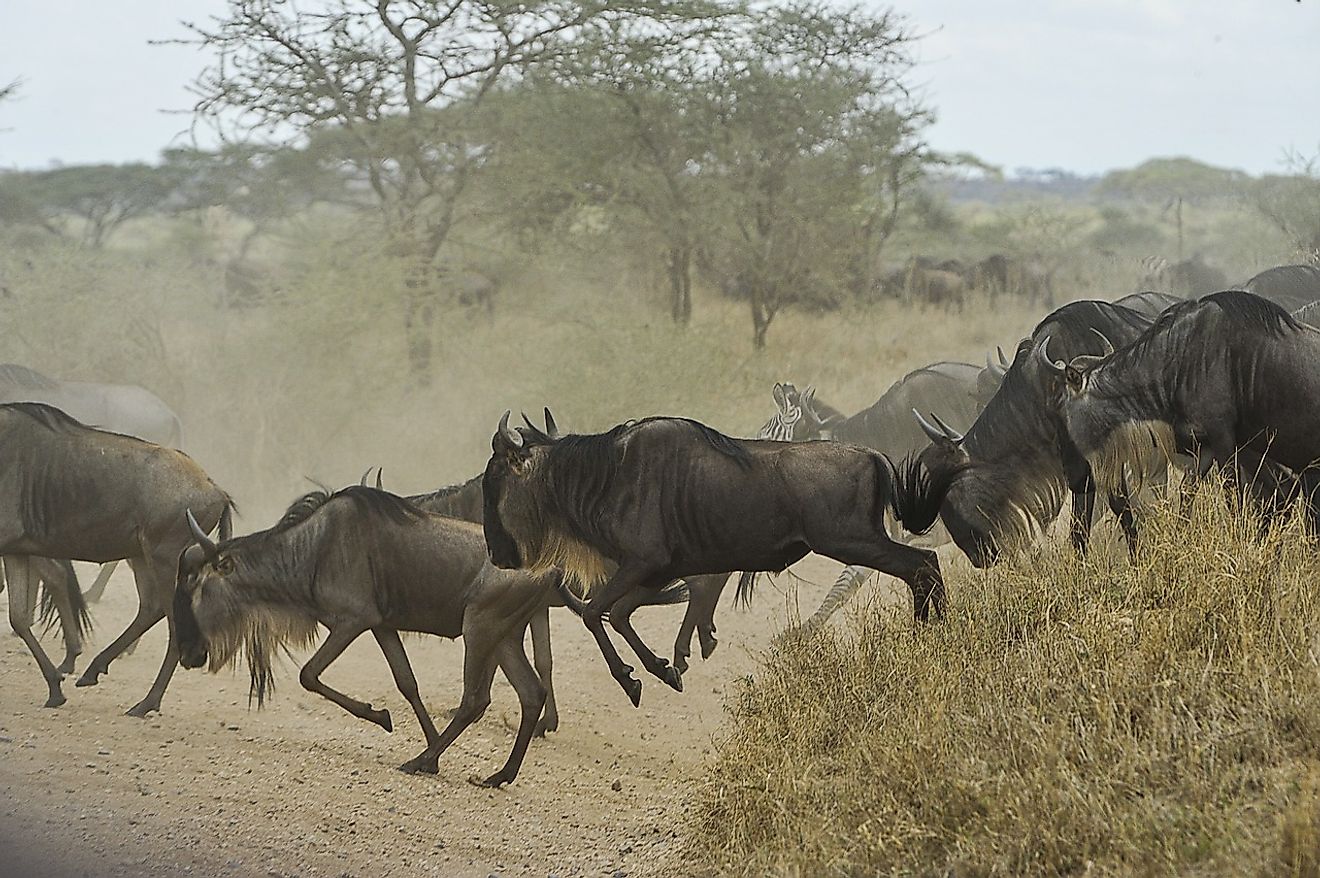Wildebeest Facts: Animals of Africa

5. Physical Description
The Wildebeest, often called the Gnu, is native to the eastern and southern parts of Africa. It has a large head with a white or gray beard. The front part of its body is stocky, with a horse-like, shaggy mane hanging from its neck. Its hind quarters are slender and resemble those of an antelope. A fully grown wildebeest can weigh up to 600 pounds with a body length of 8 feet and a height of about 4.5 feet at the shoulders. There are two types: Blue and Black Wildebeests, with the main distinctions between them being in their horns. The Blue Gnu has horns that protrude sideways and upwards, while the Black Gnu's horns curve forward and downwards before curving forward at the tip. Wildebeests have long been prized for their high quality meat.
4. Diet
The Wildebeest prefers fresh, short, green grass, and herds will constantly migrate in search of fresh pastures. In Eastern Africa, the Wildebeest migrations crossing the crocodile-infested Mara River in Kenya has been proclaimed to list among the wonders of the natural world. Wildebeest are always on the move, and they travel day and night, constantly grazing and in search of water. A Gnu cannot go without water for more than 3 days.
3. Habitat and Range
This grazer roams the grassy plains of Eastern Africa and the thinly forested woodlands of Southern Africa. Naturally, they are found only in Sub-Saharan Africa. Due to protection of their natural habitats, their numbers have steadily been on the rise, with recent migrations from Kenya’s Maasai Mara National Reserve to Tanzania’s Serengeti National Park consisting of about 1.5 million animals, which reflects a healthy, promising trend. In the southern parts of Africa, Wildebeests had been hunted for ages to the point of near extinction, but recent conservation efforts have led to an increase in their population. Big feral cats, like the lion, leopard, and cheetah, are the Gnu's main predators, with wild dogs, hyenas, and jackals occasionally hunting them as well. With their natural habitat drought-prone, wildebeests are perpetually migrating to new habitats, following patterns based on the onset of rains. The wildebeests have been somewhat protected from urbanization and agricultural development, because many graze in protected parks today. In addition to those in the wild, some Wildebeests are farmed on commercial ranches.
2. Behavior
The Gnu is a nomadic herbivore that has no permanent residence. Though it looks aggressive, the Wildebeest is a gentle animal that will gallop away at the slightest provocation. The only time aggressiveness is exhibited is during the breeding season, where the bulls will chase away their fellow competitors. They rub their heads in dust, dig into the ground with their paws, urinate, and defecate to mark territory so that other bulls won’t come around. Bulls will also snort and make loud moans while mating with any female that wanders through that marked territory. The Gnu is a herd animal, and large numbers serves as a defense mechanism against predators, due to the prospect of stampedes. They have a top speed of 39.7 miles/hour, and will cooperatively run together as herds to scare away and overcome predators en masse.
1. Reproduction
Because the Gnu keeps on migrating much of its life, it does not seek a particular lifelong mate. Instead, a bull will mate with any cow that lets it. Mating season lasts about 3 weeks, guaranteeing that a majority of the Wildebeest cows have ample opportunity to become impregnated, with the cows generally producing a calf once every 2 years. After a gestation period of eight and a half months, a cow will give birth to a single calf just after or near the end of a migration. A herd’s calves are usually all born within a span of three weeks. Though many get eaten by predators, the sheer number of newborns means many more still survive. Within an hour of birth, these calves can run and migrate with the herd, though still keeping close to their mothers. The calves are weaned after 6 months, and are soon ready to survive more independently.







